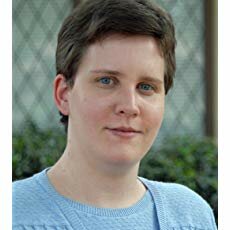I picked up the “The Mammoth Book of Apocalyptic SF” out of curiosity because I read, write and review science fiction, especially apocalyptic science fiction.
The book contains a mix of new and classic science fiction stories grouped by type of apocalypse. For example, there are plague stories and catastrophic global warming stories are grouped together. Then there are classics like “A Pail Full of Air”, “Fermi and Frost” and “When We Went to See the End of the World”.
The stories themselves are hit and miss, and unfortunately, the classics are often better. One notable exception was “The Clockwork Atom Bomb”. A post WW3 Kinshasa has weaponized black holes, and a poor country hit by biowarfare will make use of every resource it has. Another was Cory Doctrow’s “When Sys Admins Ruled the Earth”. Of course a working IT clean room is a safe place to hide during a biowarfare strike. And as XKCD has joked, there are sys admins who will crawl over glass to maintain 99.999999% uptime.
“Sleepover” is amazing, because it combines god-like AI, a post-apocalyptic war for survival, and turns a number of tropes on their heads. The closest parallel I can find is the “State” universe of Larry Niven. You expect to wake up rich or famous as a historical artifact but it is very much the opposite.
There are stories that are OK but not great like “The Bloodletting”. It does bring to light how little mistakes and oversights can render the best laid plans of elitist scientists to rest. Unfortunately, in this case, around a third of humanity dies, too. “The End of the World Show” was an entertaining mix of apocalypses though things weren’t well explained. “The Last Sunset” is “Lucifer’s Hammer”, the short story. “And the Deep Blue Sea” features a female motorcycle courier who has a medical mission and an offer from the devil to trade it for more time. “The Man Who Walked Home” suggests that our first attempt to travel in time destroyed his world and created the one he passes through.
Then there were the weak stories. “Rain at the End of the World” is an attempt to update Noah’s flood with feminist liberation. There is no story here. “The Flood” combines the rapture and the flood; the world truly ends but the character development is weak. “World without End” features a teen prostitute infected with nanotech who becomes immortal. “Terraforming Terra” relies on cloning and immortal machines to terraform Earth after a world-destroying comet. It takes millions of years to bring Earth and humanity back to life. It is great until the trope-heavy ending. “The Pallbearer” was disappointing. It revolves around a mystery to be solved, but it stretches ten to twenty pages too far.
Multiple stories were purely post-modern, meandering dreamlike messes. “Moments of Inertia” starts with death by quantum physics and turns into a history smorgasbord. Logic? Structure? No, we’ll just party with the dinosaurs and cavemen. “A Star Called Wormwood” suggests humanity’s bio-engineered creations inherit the Earth, but the vague nature gets in the way of the story. At least none of them mirror the post-modern movies that intentionally confuse things – is the end of the world a dream or is the person in the story sick/infected/dying?
Then there are the hysterical “the world is baking, let’s all hide at the poles!” batch of stories. The concept of “Guardians of the Phoenix” could take place after any disaster, but the drained, dead Mediterranean in the backdrop and other details require too much suspension of disbelief to work.
Several of the final stories feature deep time. Because humanity (in the author’s words) consumes everything, we’re left as hunter-gatherers on a world with decreasing biodiversity. Fortunately, we are ideally suited to that state. Ice ages come and go, the continents rejoin, and as the sun expands into a red giant, humanity continues. Some works rely on deep time, but few do it this well.



Comments